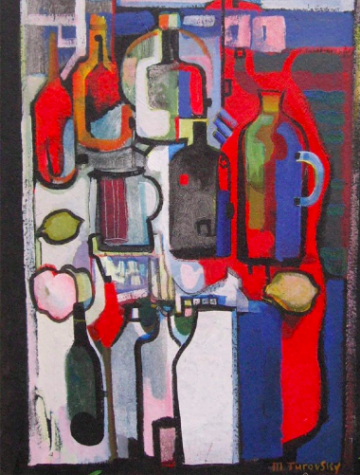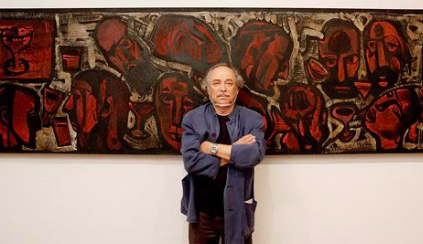Ukraine in New York City
A Visit to Manhattan's Ukraine Museum
February 18, 2020
When you think of New York art museums the first ones to come to mind are most likely the Metropolitan Museum of Art, the MoMA, or the Guggenheim. These Museum Mile icons are home to some of the world’s most renowned works of art, but hidden in the shadow of these institutions are numerous other art museums whose walls are filled with equally inspiring and important works. Many of these museum’s collections showcase the works of one specific culture, time period, or country, and grant you a specialized, in depth look at a specific category of art that you may not receive at a larger art museum. Located neighborhoods away from Museum Mile, and nestled in between the townhouses and shops on East 6th Street is a museum that tells the story of one country’s vibrant and tumultuous history through its art.
The Ukrainian Museum is a hidden gem of the East Village in Lower Manhattan, and once you find it, you will wonder why you didn’t know about it sooner. Every year this museum hosts several exhibitions that highlight the work of Ukrainian artists from specific time periods or historical events in Ukrainian history. While yes, the museum is small in comparison to a museum such as the Met, there are currently five different exhibitions on display, and each one tells its own meaningful story. Within the largest gallery on the main floor of the museum is an exhibition titled, From Darkness to Light: The Paintings of Mikhail Turovsky.
Born in Kyiv in 1933 and raised in a war-torn Ukraine, Turovsky’s rich oil paintings are steeped with the powerful emotion and hopeful pride that he feels for his country. Through a wide range of subject matters, such as the tragic Ukrainian Holodomor, Cassat-like images of mother and child, and poetic nature scenes, Turovsky provides a narrative of Ukrainian history and sheds light on both the darkness and the beauty of it. Moving up to the second-floor gallery of the museum you are met with a diverse selection of late nineteenth and early twentieth-century works in the exhibition, The Impact of Modernity. This exhibition explores the art of a rapidly changing Ukraine at the turn of the twentieth century and emphasizes the heavy influence Modernism had on the canon of Ukrainian art.
By combining the many different artistic styles from this time, such as realism, avant-garde experimental art, Impressionism, and even Cubism, this exhibition provides a visual timeline of the shifting social and political climate of Ukraine during this period. Similarly, the museum’s third exhibition, Alexander Archipenko: Selected Works, focuses singularly on the work of the avant-garde sculptor and painter Alexander Archipenko. Archipenko was greatly inspired by artists such as Pablo Picasso and George Braque, and his innovative artistic style melded the styles of Eastern and Western Europe and greatly enhanced the modern art movement in Ukraine. Along with art from Ukraine’s past, the museum also exhibits art by contemporary Ukrainian artists.

On the lower level of the museum are two exhibitions that bring attention to the tragic deportation of Crimean Tatar Ukrainians to Asia during the Crimean War, as well as the conflict that still continues to devastate Ukraine today. Photographed by Crimean photographer, Zarema Yaliboylu, Faces of the Crimean Tatar Deportation 75 Years Later, is an exhibition of photographed portraits of the survivors of the Crimean Tatar Deportation of 1944, that bring you face to face with the people who have withstood a painfully dark and trying past. Standing in front of each photograph is a profoundly moving experience, and there is a powerful story of resilience, pride and sorrow within each person’s face that is told without words. This exhibition is followed by another exhibit that focuses on the current conflict in Ukraine, titled, A Conversation: Five Years of War in the Donbas.
Installed as a performance piece, the artist, Vlodko Kaufman, drew a portrait of a fallen soldier on a small scrap of paper every time he heard about the death of a soldier in the Donbas region over the last five years until he was eventually able to cover the walls of the gallery with hundreds of these drawings. Together, these two exhibitions aim to educate people on the conflict that has darkened Ukraine’s past and continues to ravage the present, and they are a profound tribute to the innocents who have fallen victim to this conflict.
After walking through the museum and experiencing each exhibition, I found myself fully immersed in Ukrainian art history and the epic story that it tells. The thoughtful curation of the exhibitions and the captivating artwork will leave you curious to know more about Ukrainian art and the inspiring people who create it.
Take an afternoon to experience this country’s robust art history for yourself, and leave the museum enriched by a culture that will continue to inspire you long after your visit.

